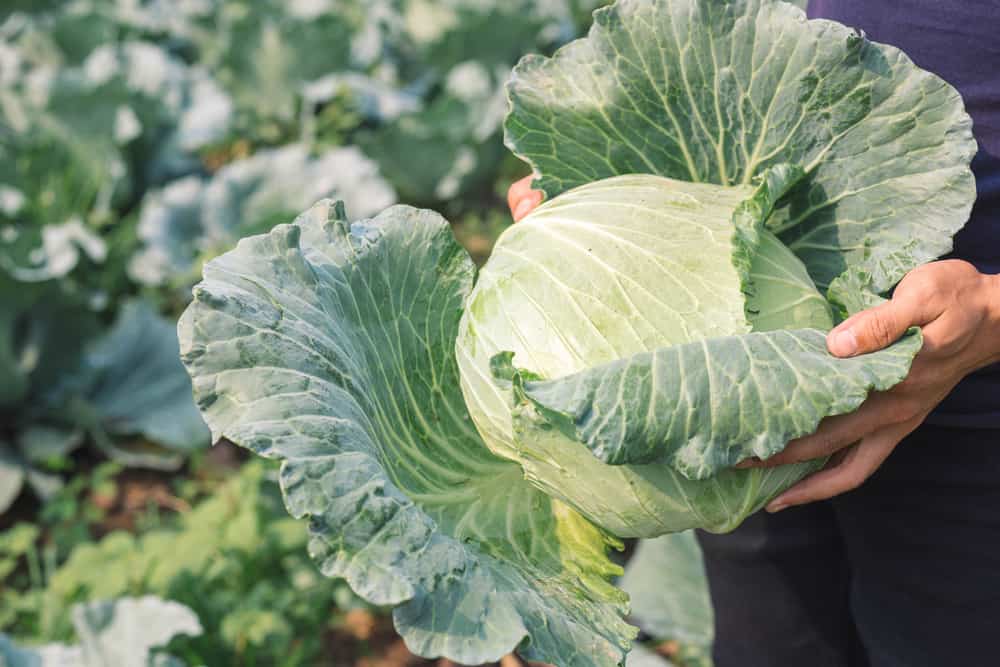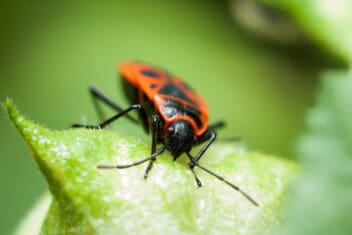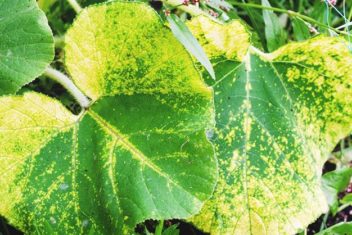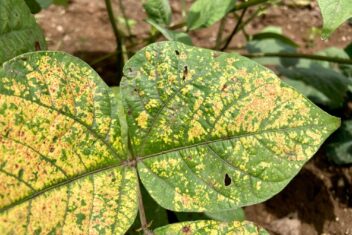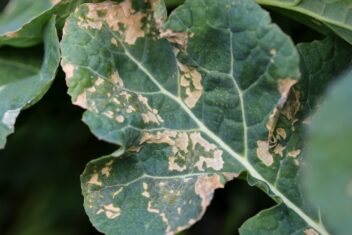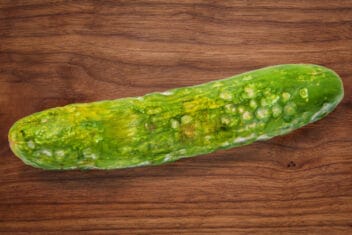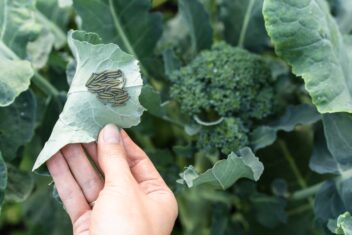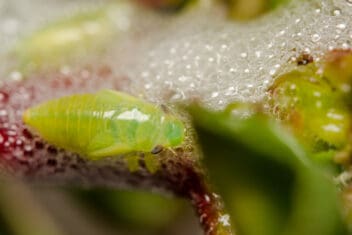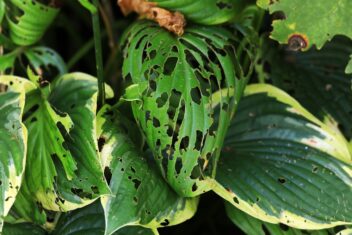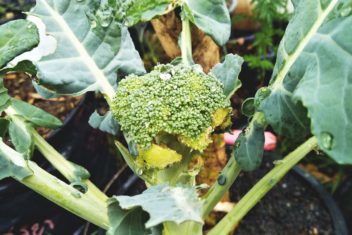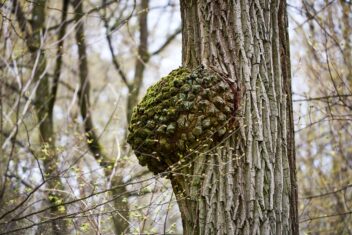Can you imagine a family BBQ without coleslaw or a weekend get-together without fried cabbage? Picture a holiday meal without sauerkraut. Horrible, right? However you like to use cabbage, it’s an easy vegetable to grow as long as you can avoid the problems they sometimes face.
During some seasons you’ll see few issues and during others, you’ll end up battling a number of them.
Let’s look at some of the problems you might encounter, and how to deal with them to ensure you get loads of this garden favorite.
1. Cabbage Won’t Form a Head
This is one of the most common complaints from many cabbage growers and it’s undeniably disappointing. You get lots of leaves, but no cabbage head forms.
Cabbages need consistent moisture, but not saturated soil. You can both overwater and underwater, and either one will result in no head forming. That said, you have a bit of latitude here. As long as you water when the top inch of soil dries out, you should be fine.
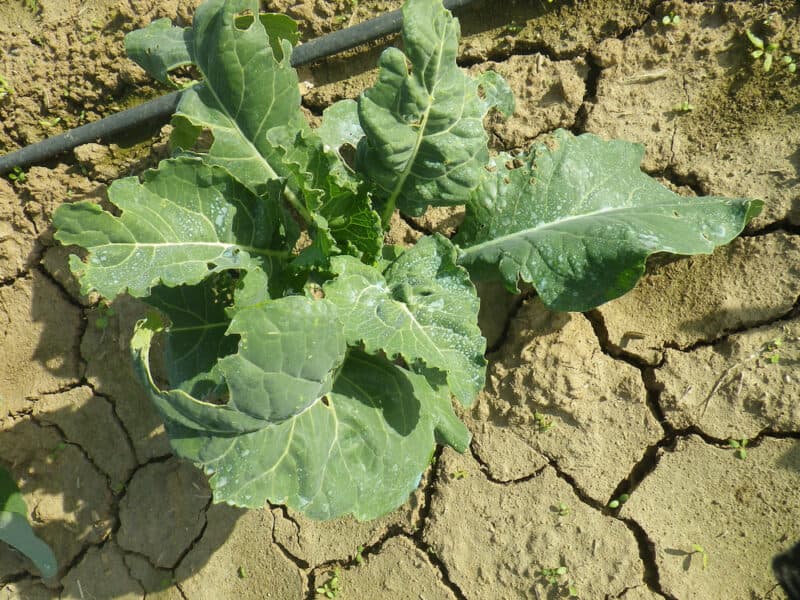
To avoid lack of moisture problems, make sure you water your cabbage consistently, especially in dry periods, and mulch if necessary.
Another reason cabbages don’t form a head is:
- Incorrect temperature: For such a simple vegetable, cabbage can be a little temperamental when it comes to heat and cold. The perfect temperature for cabbage is between 45ºF and 85ºF. If the temperature is consistently below or above that, they will stop growing, fail to form a head, or bolt to seed.
- Wrong cabbage for the time of year: There are early, mid-season and late cabbages. Make sure you plant the right one at the right time. Follow the seed planting instructions for the variety you are going to plant.
- Too much nitrogen: If you overfeed your cabbage with nitrogen, it will focus on growing leaves rather than a head. Try to balance the food you give it. A soil test can help a ton with this process.
2. Stunted Growth and Premature Dying
Cabbages are heavy feeders and this makes sense when you see the end result. They go from a tiny dot of a seed, and end up with a large layered head, and lots of leaves. The reasons why your cabbage may have stunted growth include:
- Lack of nitrogen. Cabbage have a lot of leaf growth surrounding the head and require decent amounts of nitrogen. Without it, the leaf and head growth suffer. But remember, not too much fertilizer. You need to find a balance.
- Calcium deficiency. A cabbage that doesn’t have access to the appropriate moisture can’t absorb calcium from the soil, resulting in a deficiency.
- Lack of Boron: Micronutrients like boron are important for all plants because it helps with healthy cell walls and reproductive structures. A cabbage suffering from a lack of boron will have tough and bitter heads.
To cover all bases, use a balanced 10-10-10 fertilizer. Cabbages also respond well to compost tea every two to three weeks. When the cabbage sets the head, use a fertilizer with less nitrogen to prevent the head from splitting.
3. Your Cabbages Catch Lots of Diseases
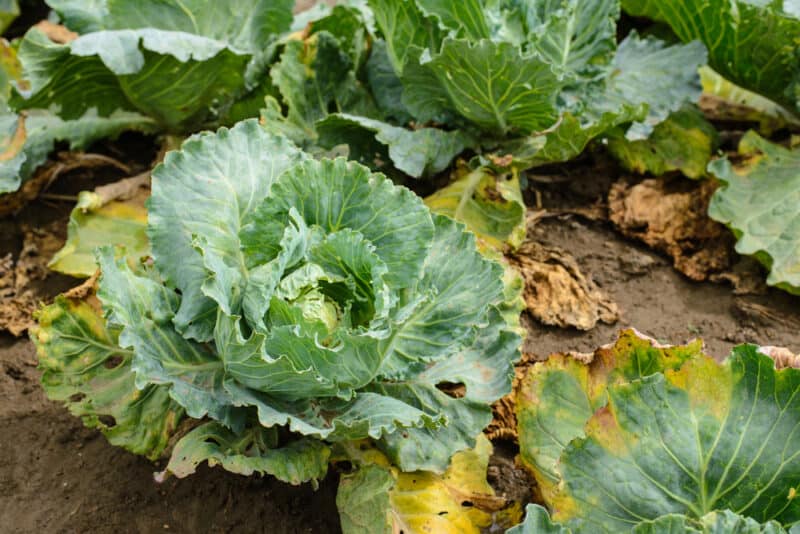
When your cabbage seems to come down with every disease under the sun, it could be something as simple as garden hygiene.
If your vegetable garden is too weedy, this prevents good airflow which creates a breeding ground for all manner of diseases. Make sure all garden debris is cleared out every season. Mulching helps to keep weeds down.
Don’t forget about crop rotation. So many of the diseases that affect cabbage overwinter in the garden after the season ends. Cabbage is one vegetable I really encourage gardeners to rotate regularly. Don’t plant your cabbage in a garden that has had cabbage, kale, broccoli, cauliflower, or Brussel sprouts planted in the last two years.
If your cabbage has had problems with diseases in the past seasons, consider using a three or even four-year planting cycle.
4. The Main Cabbage Stem is Wiry and Dark
While not one of the most common cabbage problems, it’s certainly one of the most annoying. This is often called wire stem and is more of a problem in wet soil. It’s caused by a fungus called Rhizoctonia spp., which can also cause damping off.
Ensure the cabbage isn’t sown or planted in wet or clay soil that doesn’t drain well. You should also be sure to rotate your brassicas and use good garden hygiene. That means cleaning your tools in between use.
5. Cabbage Becomes Light Green Before Wilting and Stems Develop Slimly Rot
Soft rot is caused by bacteria that show up as water spots on the leaves and roots. These spots become black and mushy and can cause a black ooze to develop in parts of the plant.
This rot can’t be cured and you will need to burn the infected plant.
Good drainage is key to avoiding soft rot. Add quality compost to the soil and don’t water from overhead. This is also a good reason to practice crop rotation.
6. Edges of Inside Cabbage Leaves Turn Brown
Sometimes called tip-burn, this is one of several cabbage growing problems caused by insufficient water uptake. It’s not due to insufficient watering by you or not enough natural rain. It’s the result of the plant not being able to take up moisture from the soil, resulting in a calcium deficiency.
You could have all the calcium in the world in your soil, but if the plant can’t take it up, it becomes deficient.
Check the soil pH and adjust if necessary. If the pH is below 6.0, add limestone because it contains calcium and neutralizes the soil. The perfect soil pH for cabbage is between 6.0 and 7.0.
Testing soil for pH levels is important for cabbages because it can be the difference between having a bumper crop and a failed one. Some vegetables are suitable for any soil, cabbages not so much.
The problem can also be caused by irregular watering, high humidity, and growth that is too rapid (usually caused by overfeeding).
7. Young Cabbage Flowers Prematurely
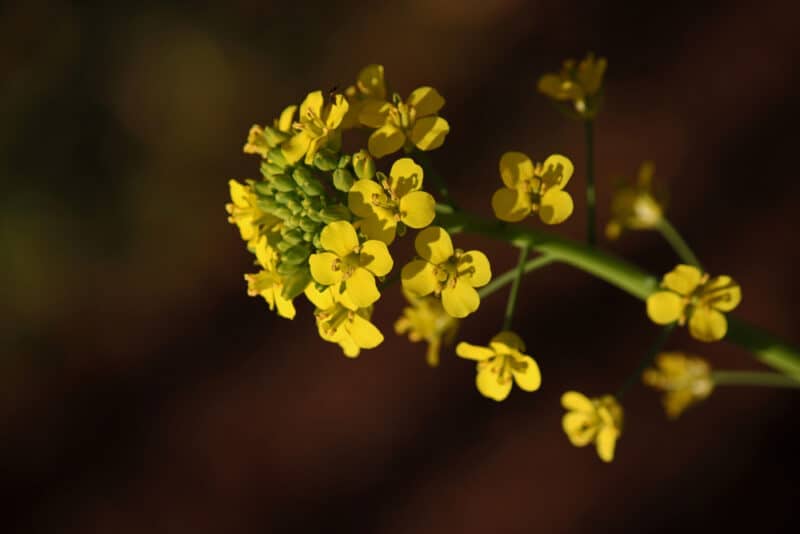
Consistent cold temperatures below 45ºF will cause young cabbage to flower and cease the growth of the head. Bolting can also be caused by excessive heat. To avoid this problem:
- Make sure you plant the correct cabbage at the right time of the year.
- Plant transplants no sooner than one to three weeks before the last average frost in your area.
- Use floating row covers to protect young cabbage
- Commence a good watering regime when plants are small and keep soil consistently moist, but not wet.
- Allow the cabbage to absorb quality nutrients through feeding, good quality soil, and mulching.
8. Cabbage Seedlings Collapse as Soon as They Appear
Of all the cabbage growing problems, this is especially disheartening because your cabbages fail before they really get started. Damping off is a soil-borne oomycete that is common in high humidity areas. Depending on what’s happening that year humidity-wise, plus the rainfall and sunlight hours, it may r may not pop up.
Don’t plant seed or transplant young seedlings into cold, moist soil. Make sure your soil is well-draining but can hold moisture. Be sure to clean your tools between use and rotate your crops.
9. The Cabbage Struggles to Develop and the Roots are Tunneled Into
Reasons for cabbage plants struggling can be numerous, but the telltale sign here is the tunneled roots when you remove the plant.
The cabbage root fly lays its eggs in the soil, allowing the maggots to tunnel into the roots of the plants. The roots will be marked with brown scars and sometimes they are honeycombed with slime.
- Use floating row covers to deter the flies in the first place.
- Apply lime or wood ash around the bases of the young plants.
- Plant later in the season if the season has started out wetter than usual.
- Use mint as a companion plant to deter the fly.
- Solarize the soil with clear plastic sheets, and don’t plant anything in the cabbage family in that garden for between two and four years.
10. Thick Stems and Few Usable Leaves
Don’t you hate it when you cut into a large cabbage and its mostly thick stems, not the soft, juicy leafy part used in cooking?
You may simply have harvested the cabbage too late. Leaving a cabbage head on too long will result in a woody cabbage.
Make sure you know what size is optimal for harvesting the cabbage you have planted. Some commercial varieties sold in shops are huge, while many homegrown varieties are smaller and suitable for one or two meals only. Many varieties are optimal when they are the size of a softball.
11. Cabbage Head Splits
This issue is caused by too much or too little water, typically. It usually happens late in the growing season when the head is getting nice and firm.
Once you notice the forming head starting to split, it’s too late to fix it. The split lets in all manner of bugs and rot. This often happens when you water heavily after an extended dry period. The cabbage will be woody even if you manage to cut around the split.
The biggest risk for splitting is after an extended period of dryness, followed by a lot of moisture. That’s why it’s important to keep your plant well-watered during dry spells.
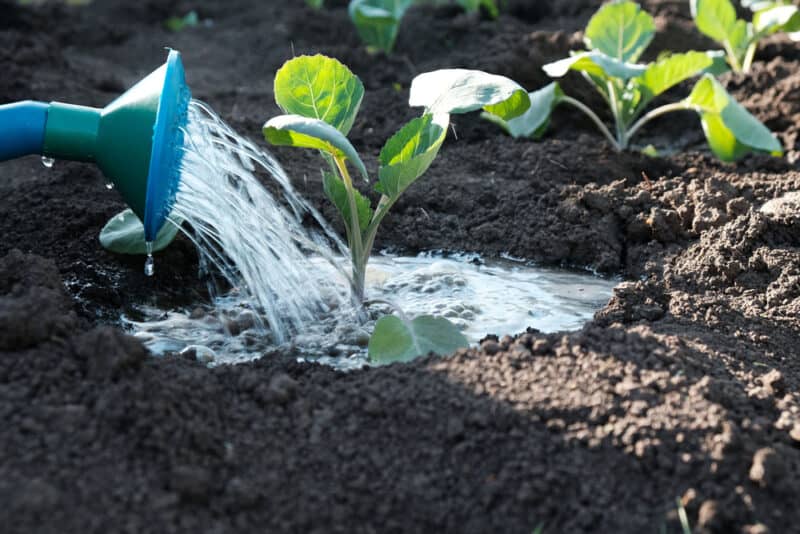
You can also cause the heads to crack by offering too much fertilizer. This causes rapid growth, which puts pressure on the head, forcing it to crack.
Like most vegetables, cabbage can be affected by numerous problems, pests, and diseases, but they can also be plain fickle. With a little knowledge and prep, most problems can be either avoided or easily remedied.
Remember: Rotate your crops every year or two and take care of your soil. That means working in lots of compost. Mulch is your friend when it comes to regulating moisture.
